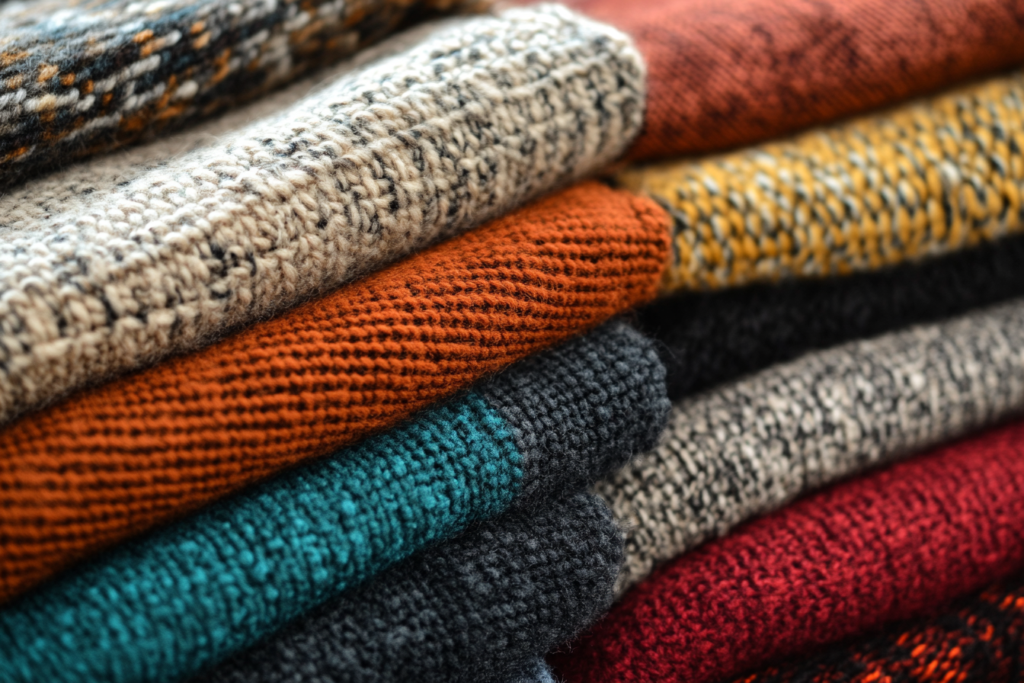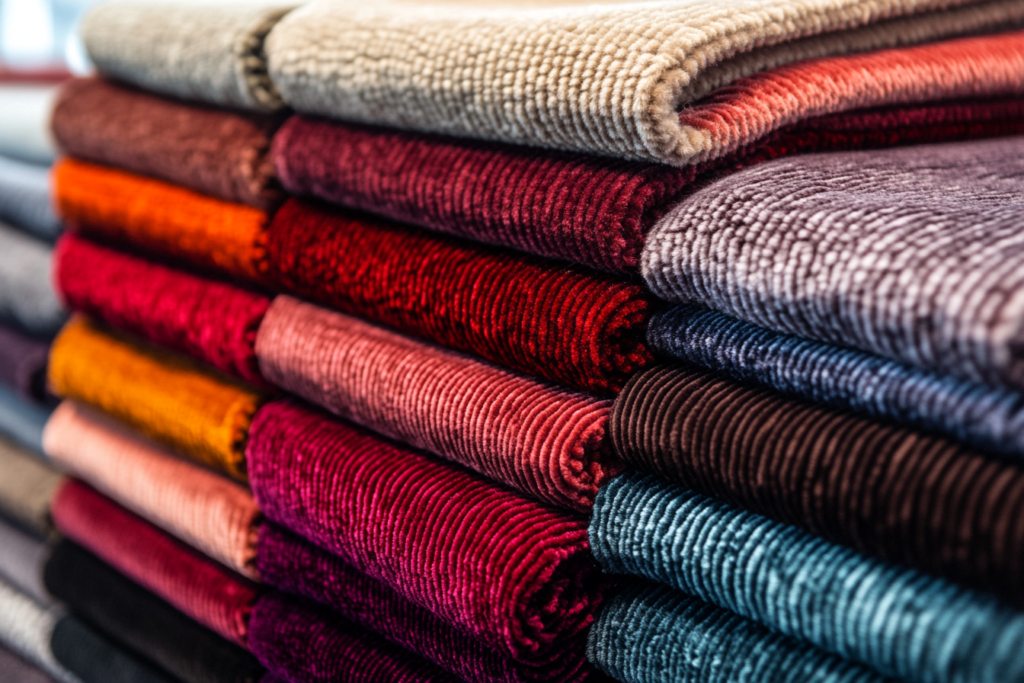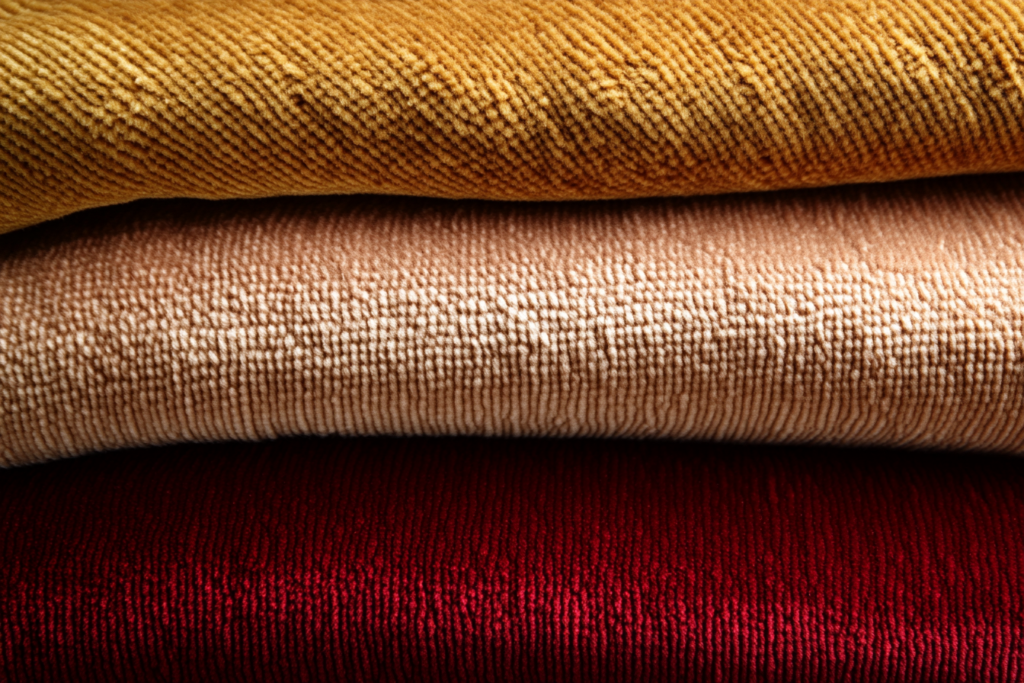Pile Fabric: A Textured Textile Made with Looped or Cut Surface Yarns
Meta Description: Pile fabric is made with three yarn types—warp, weft, and looped or cut surface yarns—creating a plush texture. Learn how velvet, corduroy, and knitted pile fabrics are produced.
What is Pile Fabric?
Pile fabric is a textile structure that consists of three sets of yarns: warp, weft, and an additional layer of looped or cut yarn on the fabric surface. This extra pile yarn creates a soft, textured finish that enhances the aesthetic, comfort, and warmth of the fabric.
Pile fabrics can be made using woven or knitted techniques, with common examples including velvet, corduroy, terry cloth, and plush knits.


Key Features of Pile Fabrics
✔ Made with Three Types of Yarn – Includes warp, weft, and surface pile yarns.
✔ Soft, Textured Surface – Created through looping or cutting techniques.
✔ Can Be Woven or Knitted – Found in luxury, casual, and performance textiles.
✔ Enhances Warmth & Comfort – Retains heat and provides a plush feel.
✔ Common in Apparel, Upholstery & Home Textiles – Used in clothing, furniture, and accessories.
Types of Pile Fabrics
1. Woven Pile Fabrics
- Created by adding extra warp or weft yarns that form loops or are cut.
- Includes velvet, corduroy, and terry cloth.
2. Knitted Pile Fabrics
- Achieved by inserting pile yarns into a knitted fabric structure.
- Common in faux fur, plush knits, and velour fabrics.
3. Loop Pile vs. Cut Pile
- Loop Pile – The pile yarn remains uncut, forming loops (e.g., terry cloth).
- Cut Pile – The pile yarn is sheared, creating a smooth, fuzzy surface (e.g., velvet).
Examples of Popular Pile Fabrics
📌 Velvet – A luxurious cut-pile fabric with a soft, dense surface.
📌 Corduroy – Features raised vertical ribs (wales) created by cut pile.
📌 Terry Cloth – A loop-pile fabric used in towels and robes.
📌 Velour – A knitted pile fabric similar to velvet but stretchable.
📌 Plush & Faux Fur – Soft, high-pile knits used in coats and blankets.
Pile Fabric vs. Other Fabric Structures
| Feature | Pile Fabric | Plain Weave | Knit Fabric |
|---|---|---|---|
| Construction | Has an extra pile yarn layer | Basic interlaced warp & weft | Formed by looping yarns together |
| Texture | Soft, plush surface | Smooth, flat | Stretchy, flexible |
| Common Uses | Velvet, corduroy, terry cloth | Shirts, skirts, home textiles | T-shirts, leggings, sportswear |
| Warmth & Comfort | Retains heat well | Lightweight & breathable | Soft, often flexible |
💡 Tip: Pile fabrics offer a plush, warm feel, while plain weaves and knits provide lighter and smoother finishes.
How Pile Fabrics Are Made
1️⃣ Extra yarns are woven or knitted into the fabric structure.
2️⃣ For loop pile fabrics – The pile yarns are left uncut to form loops (e.g., terry cloth).
3️⃣ For cut pile fabrics – The pile yarns are sheared to create a smooth texture (e.g., velvet).
4️⃣ Brushing or steaming may be applied to enhance softness and finish.
💡 Tip: The direction of the pile affects the fabric’s appearance and light reflection, making it important in luxury textiles.
Why Choose Pile Fabrics?
✔ Adds Texture & Dimension – Creates visual interest with soft, raised surfaces.
✔ Provides Warmth & Softness – Ideal for cold-weather clothing and upholstery.
✔ Versatile for Fashion & Home Decor – Used in luxury apparel, casualwear, and furniture.
✔ Durable & Long-Lasting – Can withstand wear and maintain structure over time.
✔ Offers a Unique Look & Feel – Enhances both aesthetic appeal and functionality.
Conclusion: The Appeal of Pile Fabrics in Fashion & Textiles
Pile fabrics are essential in fashion, upholstery, and home textiles, providing softness, texture, and warmth. Whether woven or knitted, looped or cut, these fabrics bring comfort and style to clothing, furniture, and accessories.
For designers and textile manufacturers, understanding pile fabric structures helps in selecting the right material for fashion-forward and functional designs.



